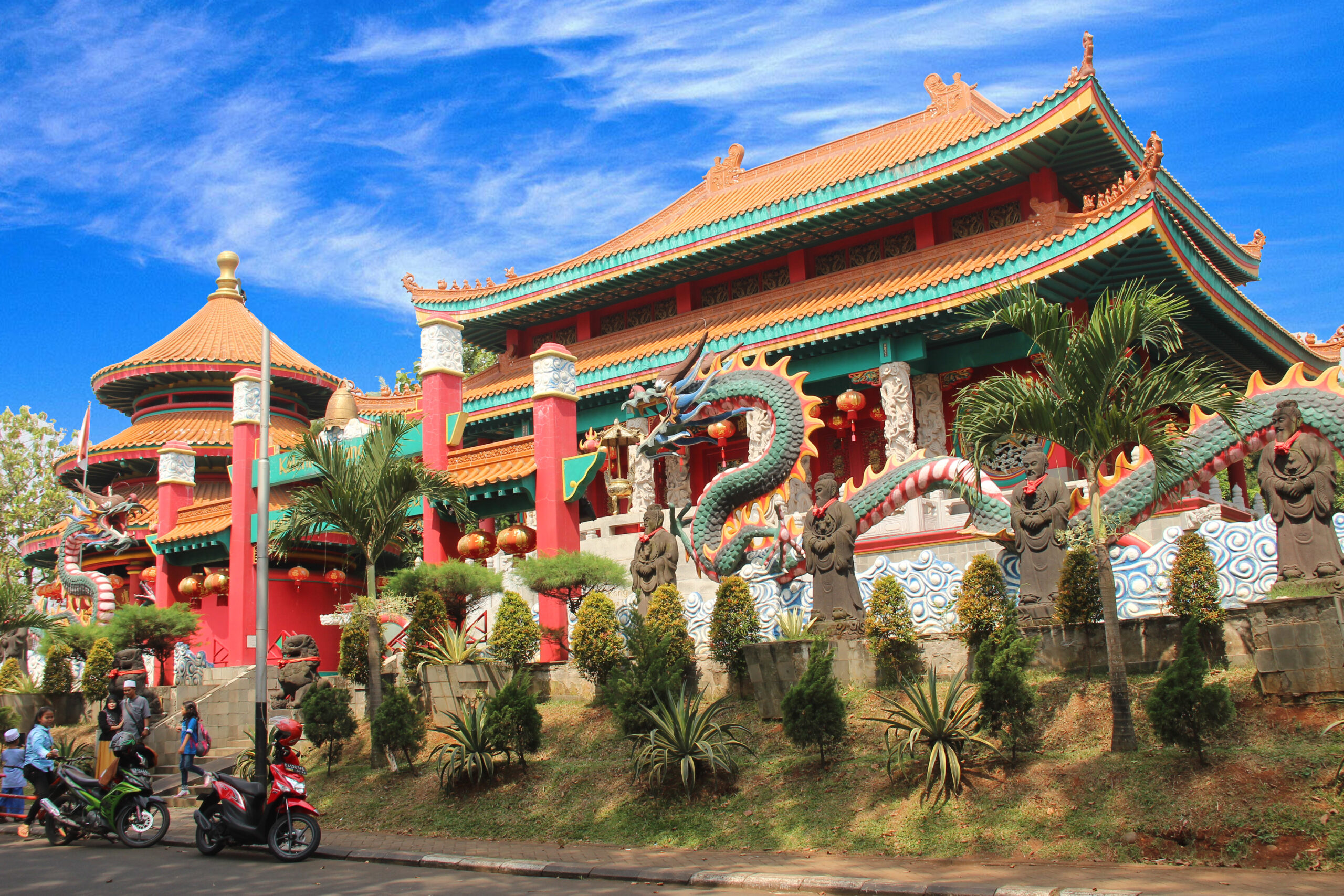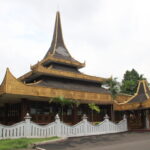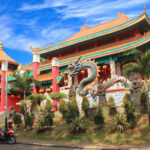Kong Miao Temple, a place of worship for the followers of Confucianism, stands alongside various other places of worship at TMII, symbolizing harmony in religious diversity. Its construction began with the laying of the foundation stone by the Minister of Religious Affairs, Dr. Maftuh Basyuni, in 2009. The inauguration took place in 2010, led by the Chairwoman of the Harapan Kita Foundation, Hj. Siti Hardiyanti Rukmana, and received an honorable visit from President Susilo Bambang Yudhoyono and Mrs. Ani Yudhoyono. During the event, they planted a pine tree as a symbol of blessing.
The complex of Kiong Mao Temple consists of three main buildings: Tian Tan (Sacred Altar), Da Cheng Dian (Great Prophet Temple), and Qi Fu Dian (Blessing Temple). Tian Tan takes the form of a circular building symbolizing the perfection of God, with a three-tiered roof representing God (Tian), humanity (Ren), and earth (Di).
The Da Cheng Dian building presents distinctive Chinese architecture in the form of a rectangular structure with two floors. The upper floor houses an altar for God, the Prophet’s altar, and places for worship, while the lower floor serves as an office and library.
Finally, the Qi Fu Dian building, shaped like a square, serves as an altar to honor the Holy Beings (Spirits, Angels, Ancestors), adorned with rows of candles and plates of fruits for prayer. A pair of dragons and symbols of Confucianism decorate the roof of this 81 m² building, which is supported by eight pillars.
Not only that, Kong Miao Temple is adorned with ornaments such as Xiang Lu (Hio Lo or incense burner), gate doors embellished with a pair of lions, dragons, qilins, statues of the 12 zodiac animals, and a dragon-headed turtle, providing spiritual grounding for the followers of Confucianism








